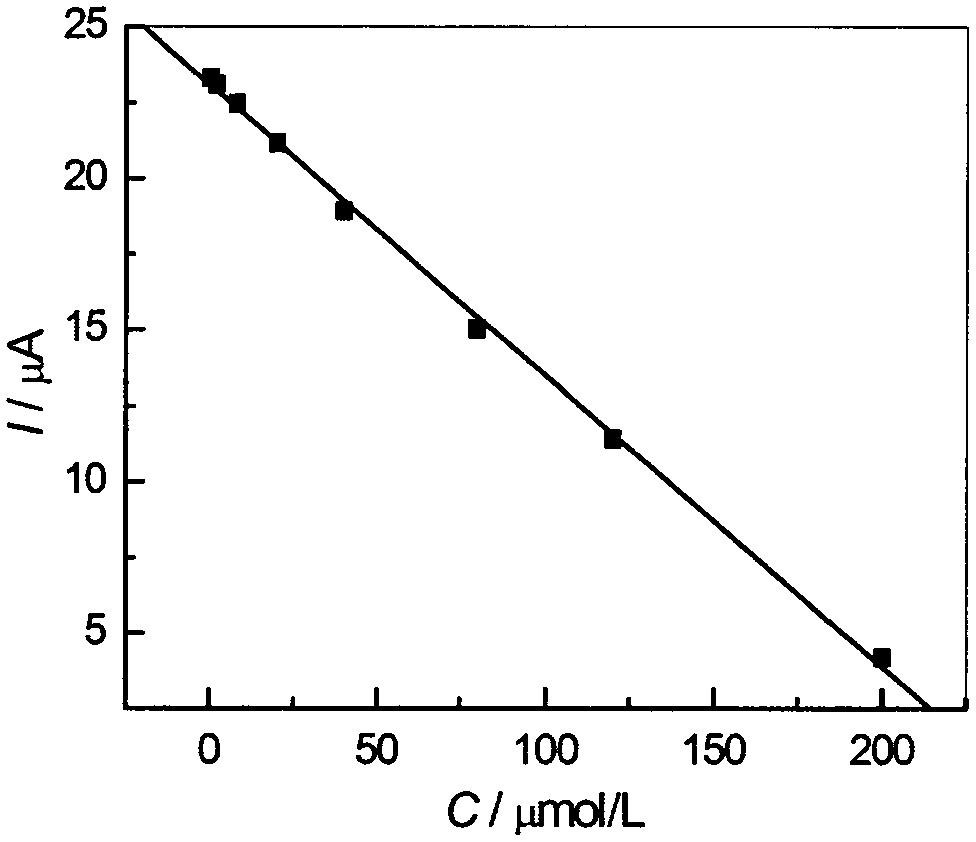Method for preparing high-sensitivity nano-zirconia-doped dezocine molecular imprinting electrochemical sensor
A nano-zirconia and molecular imprinting technology, applied in the direction of material electrochemical variables, can solve the problems of inappropriate matching of functional monomers and template molecules, low sensitivity, and poor cross-linking rigidity.
- Summary
- Abstract
- Description
- Claims
- Application Information
AI Technical Summary
Problems solved by technology
Method used
Image
Examples
Embodiment 1
[0014] 1. Treatment of glassy carbon electrodes
[0015] Polish the glassy carbon electrode on a polishing cloth with 1.0 μm, 0.3 μm and 0.05 μm alumina powder in turn, then put it into nitric acid with a volume ratio of 1:1 for 8 minutes, then put it into absolute ethanol for 8 minutes, and finally Ultrasonic cleaning with pure water.
[0016] 2. Preparation of dezocine molecularly imprinted electrochemical sensor
[0017] To 10.0mL solvent ethanol, add 0.4mmol template molecule dezocine, 2.0mmol functional monomer (5s, 8s)-3-(4'-chloro-3'-fluoro-4-propenylbiphenyl) -3-yl)-4-hydroxyl-8-methoxy-1-azaspiro[4.5]dec-3-en-2-one, 5mmol crosslinking agent maleic rosin ethylene glycol acrylate, 0.25mmol initiation Azobisisobutyronitrile and 0.0350g of nano-zirconia, each chemical reagent added ultrasonically dissolved for 9 minutes;
[0018] Take 8 μL of the mixture in step and apply it on the surface of a clean and smooth glassy carbon electrode with a diameter of 2 mm. The t...
PUM
 Login to View More
Login to View More Abstract
Description
Claims
Application Information
 Login to View More
Login to View More - R&D
- Intellectual Property
- Life Sciences
- Materials
- Tech Scout
- Unparalleled Data Quality
- Higher Quality Content
- 60% Fewer Hallucinations
Browse by: Latest US Patents, China's latest patents, Technical Efficacy Thesaurus, Application Domain, Technology Topic, Popular Technical Reports.
© 2025 PatSnap. All rights reserved.Legal|Privacy policy|Modern Slavery Act Transparency Statement|Sitemap|About US| Contact US: help@patsnap.com

